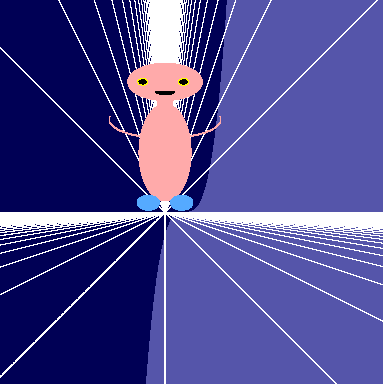
"E.T. Phone Home," by David, Wyman, and Sterling, 2000
[via cpb on NN]
Good essay on Meet John Doe, part of a larger series on "American heroes." This trope bears studying because it's still very much with us: somehow people got the idea that George Bush was a hero and spoke for the common person. So-called Straight Talk McCain and the manly-smelling Fred Thompson (manly-smelling to Chris Matthews anyway) also tap into this ideal.
These folks furnished and lived in an apartment in an overlooked cinderblock space inside the Providence Mall--the nook was originally used in the construction of the building in the late '90s, abandoned, and obviously not very well guarded. They moved in a stove, couch, dishes, rugs, TV, playstation, but no toilet. Their squat lasted a few years. This reminds me of J.G. Ballard's book Concrete Island, about a man marooned in an overlooked urban pocket between freeways and his Robinson Crusoe-like existence there. An interesting YouTube linkable from the newspaper article shows how the Providence Mall was designed to provide pedestrian frontage only to the well-to-do neighborhoods but very little access from the "poor" areas. The apartment was on the "back" side of the mall. (hat tip to bloggy)

Congratulations to family member and friend Andrea Ottesen for her image that graces the cover of the September 28 Science magazine. Here's what they said:
COVER The red alga Chondrus crispus (Irish moss). This image, taken with a digital point-and-shoot camera, tied for first place in the photography category of the National Science Foundation/Science 2007 Visualization Challenge. All the winning entries are displayed in a special feature beginning on page 1857 and online at www.sciencemag.org/sciext/vis2007.
Image: Andrea Ottesen
The slide show text adds that "the 15 centimeter wide red alga seems exotic in this abstract portrait, but it's one of the most common seaweed species on the Atlantic coast." One reason it's eye-grabbing is the structure reads like a symmetrical pattern but the seven "stems" make it actually asymmetrical. Don't know how usual or unusual that is in nature, or if all the Irish moss have have seven stems. Also, the black space inside the "stems" looks like the petals of a flower, so you get a kind of double image. I'm biased in believing Andrea blew away the other contestants you can see in the slideshow, but I also enjoyed the NASA computer visualizations of stratosphere-high "hot towers" in Hurricane Bonnie.
Update: Andrea answered my Chondrus Crispus query thusly: "Actually they usually have so many 'stems' that it is impossible to get a single clump to lie flat. This one had few enough--it was a tiny mass compared to its neighbors--so I could get it pressed and separated, and its form could actually be seen."
The movie 8 BIT received some excellent press for its recent screening in Winnipeg; please go read the reviews over at the vertexList blog. All the writers caught the spirit of the film and two out of three even liked the "brainiac art theory."